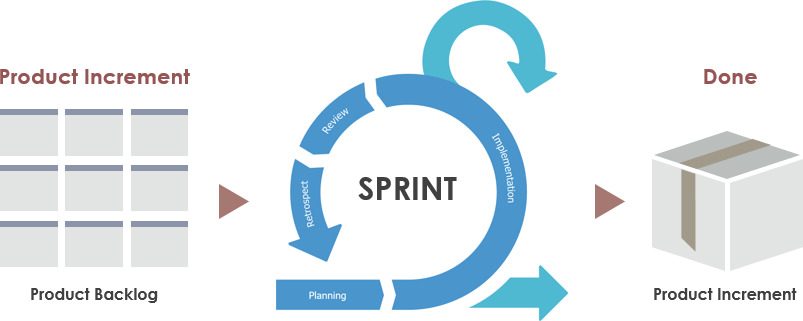Understanding the Agile Trilogy: Product Backlog, Sprint Backlog, and Product Increment
Introduction
In the dynamic world of Agile development, effective project management is powered by a trilogy of essential components— the Product Backlog, the Sprint Backlog, and the Product Increment. These interconnected elements provide the framework for iterative and incremental progress, enabling teams to respond swiftly to changing requirements and deliver a valuable product. Let’s delve into the relationships between these three pillars of Agile methodology to unravel the secrets of seamless project execution.
Product Backlog vs Sprint Backlog vs Product Increment
In Agile, the product backlog, sprint backlog, and product increment are key elements that help manage and deliver a project in an iterative and incremental fashion.

-
Product Backlog:
- It’s a dynamic, prioritized list of features, user stories, and tasks that need to be implemented in the product.
- It represents the entire scope of the project and is managed by the product owner.
- Items at the top are more detailed and have higher priority, while those lower down are less defined or lower in priority.
- The product backlog evolves as the product and project progress, and new insights are gained.
-
Sprint Backlog:
- From the product backlog, a subset of items is selected for a specific iteration or sprint.
- The sprint backlog is created during the sprint planning meeting, where the team decides which product backlog items to tackle in the upcoming sprint.
- It is a detailed plan that outlines the tasks and activities the development team will work on during the sprint.
- The sprint backlog is a commitment by the team to complete the selected items by the end of the sprint.
-
Product Increment:
- The product increment is the sum of all the completed and potentially shippable product backlog items from the current and previous sprints.
- At the end of each sprint, the team should deliver a potentially releasable product increment, which is a working and usable subset of the product.
- It allows stakeholders to see tangible progress and provides the option to release or deploy the product at the end of any sprint.
- The goal is to have a potentially shippable product increment after each sprint, adding value to the product with each iteration.
The product backlog is the overarching list of requirements, the sprint backlog is the plan for a specific iteration, and the product increment is the result of completing backlog items at the end of each sprint, leading to a potentially shippable product.
In the dynamic world of Agile development, effective project management is powered by a trilogy of essential components— the Product Backlog, the Sprint Backlog, and the Product Increment. These interconnected elements provide the framework for iterative and incremental progress, enabling teams to respond swiftly to changing requirements and deliver a valuable product. Let’s delve into the relationships between these three pillars of Agile methodology to unravel the secrets of seamless project execution.
In the Agile landscape, the Product Backlog stands as the dynamic repository of project requirements, meticulously prioritized by the product owner. From this backlog emerges the Sprint Backlog, a focused selection of items for a specific iteration, forming the blueprint for the team’s commitment during a sprint. As the sprint concludes, the culmination of completed tasks and features forms the Product Increment—a potentially releasable version of the product. This iterative dance between backlogs and increments ensures continual progress, transparency, and the delivery of incremental value, making the Agile trilogy an indispensable guide to successful project management.
Summary
In the Agile landscape, the Product Backlog stands as the dynamic repository of project requirements, meticulously prioritized by the product owner. From this backlog emerges the Sprint Backlog, a focused selection of items for a specific iteration, forming the blueprint for the team’s commitment during a sprint. As the sprint concludes, the culmination of completed tasks and features forms the Product Increment—a potentially releasable version of the product. This iterative dance between backlogs and increments ensures continual progress, transparency, and the delivery of incremental value, making the Agile trilogy an indispensable guide to successful project management.

